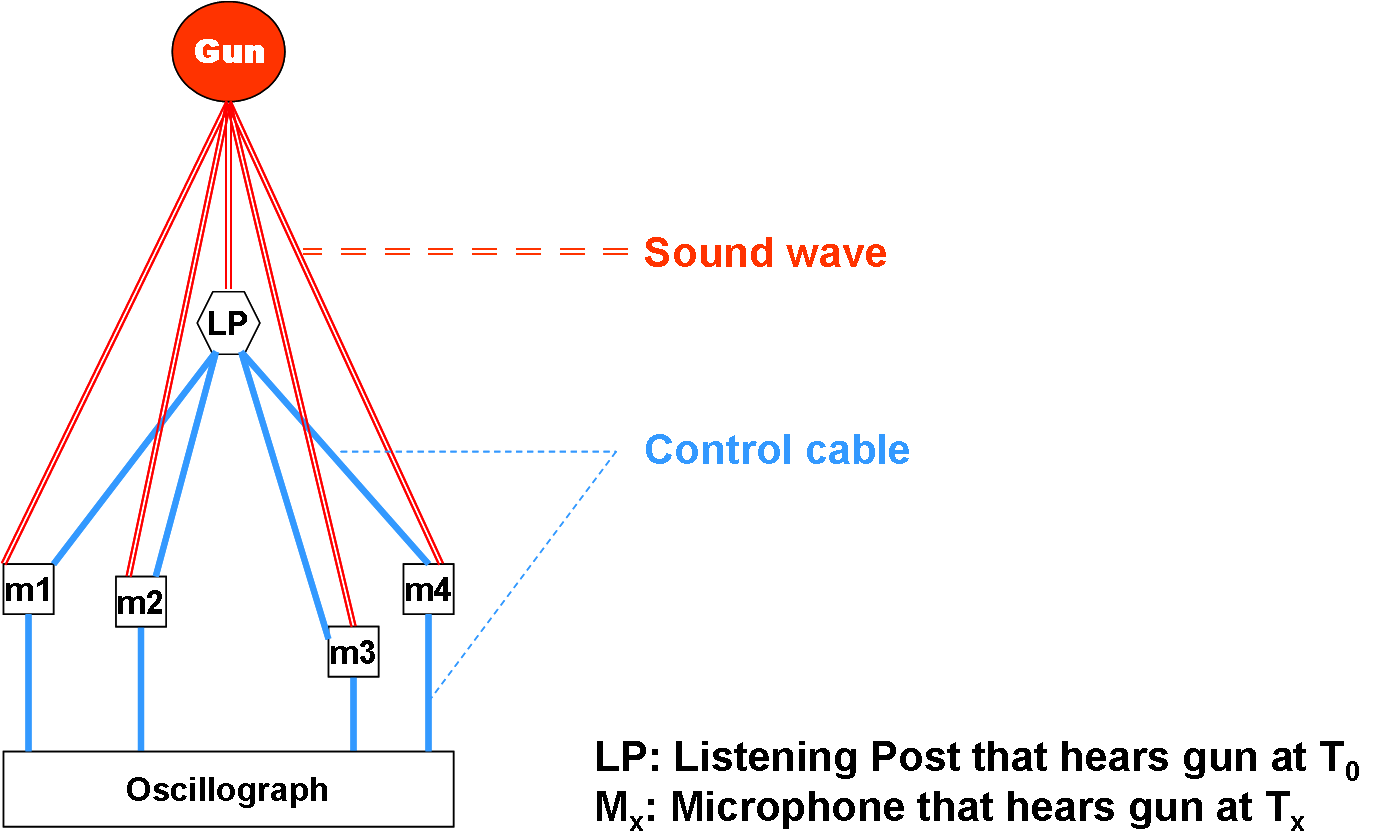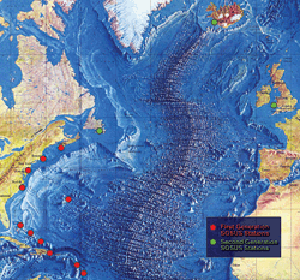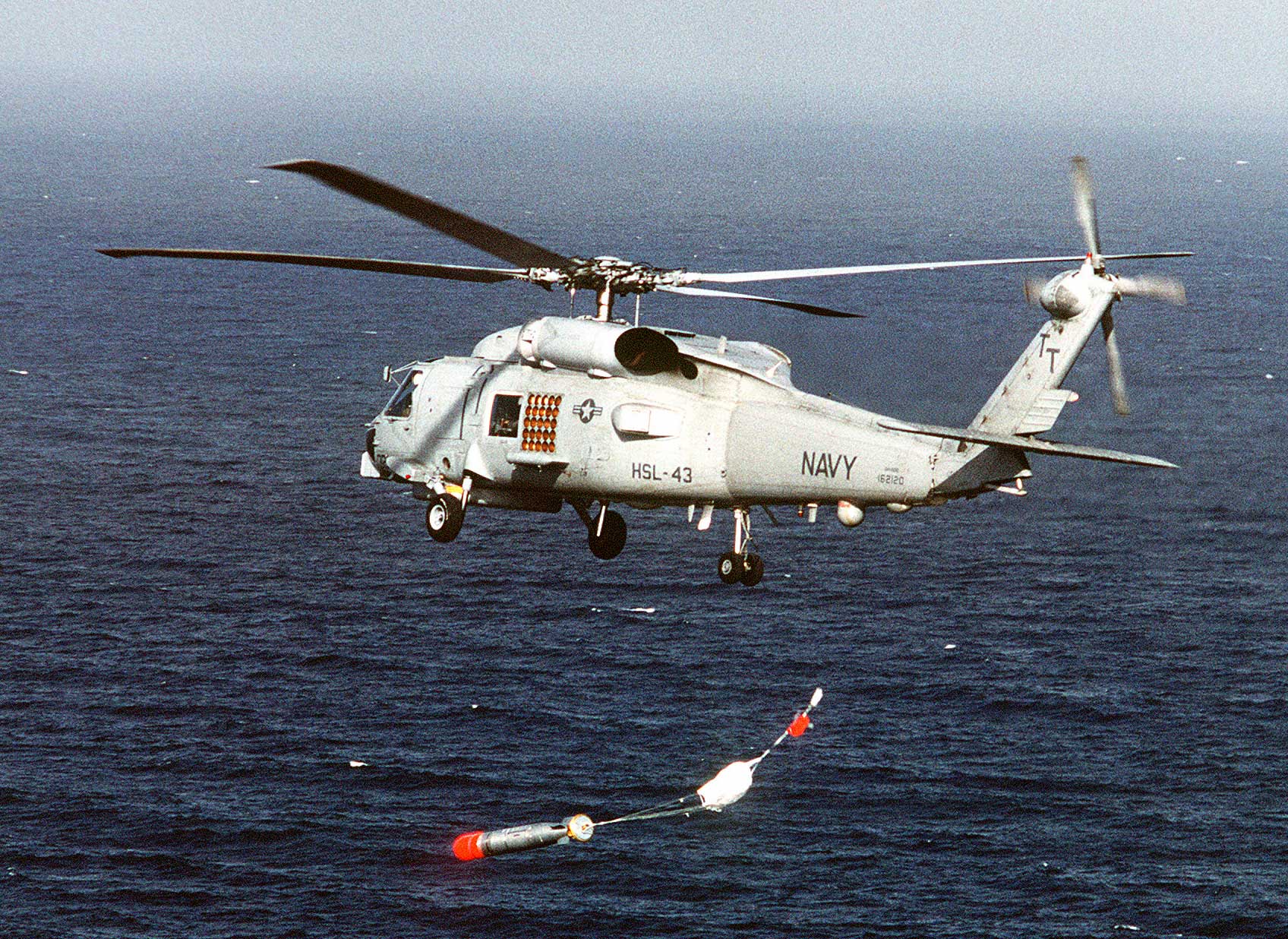|
HELRAS
HELRAS or the Helicopter Long Range Active Sonar is a naval helicopter undersea sensor, a dipping sonar (a form of towed array sonar), deployed by helicopters of many naval air forces around the world to detect submarines; it is a form of geophysical MASINT. History HELRAS was first developed in the 1970s by Bendix, FIAR and British Aerospace. Another rival system was called FLASH (Folding Light Acoustic System for Helicopters). In the 1980s, the system was supplied by Bendix. A competitor of HELRAS is the Low Frequency Active Sonar (LFAS). Capability It can detect submarines up to 60NM. Manufacture Parts for the system are made by Rolls-Royce North America. Deployment The system has been fitted to EH101, S70B, NH90, CH-148, AS532SC, AB412, and AS565 with helicopter of navies such as Italy, Turkey, Greece, Netherlands, Canada, Singapore, Thailand, Chile, Brazil, Indonesia, and Morocco. The system has also been fitted to unmanned surface vessels Seagull and RHIBs for Israel an ... [...More Info...] [...Related Items...] OR: [Wikipedia] [Google] [Baidu] |
Geophysical MASINT
Geophysical MASINT is a branch of Measurement and Signature Intelligence (MASINT) that involves phenomena transmitted through the earth (ground, water, atmosphere) and manmade structures including emitted or reflected sounds, pressure waves, vibrations, and magnetic field or ionosphere disturbances. According to the United States Department of Defense, MASINT has technically derived intelligence (excluding traditional imagery IMINT and signals intelligence SIGINT) that – when collected, processed, and analyzed by dedicated MASINT systems – results in intelligence that detects, tracks, identifies or describes the signatures (distinctive characteristics) of fixed or dynamic target sources. MASINT was recognized as a formal intelligence discipline in 1986. Another way to describe MASINT is a "non-literal" discipline. It feeds on a target's unintended emissive by-products, the "trails" - the spectral, chemical or RF that an object leaves behind. These trails form distinct signature ... [...More Info...] [...Related Items...] OR: [Wikipedia] [Google] [Baidu] |
Military Helicopter
A military helicopter is a helicopter that is either specifically built or converted for use by military forces. A military helicopter's mission is a function of its design or conversion. The most common use of military helicopters is transport of troops, but transport helicopters can be modified or converted to perform other missions such as combat search and rescue (CSAR), medical evacuation (MEDEVAC), airborne command post, or even armed with weapons for attacking ground targets. Specialized military helicopters are intended to conduct specific missions. Examples of specialized military helicopters are attack helicopters, observation helicopters and anti-submarine warfare helicopters. Types and roles Military helicopters play an integral part in the sea, land and air operations of modern militaries. Generally manufacturers will develop airframes in different weight/size classes which can be adapted to different roles through the installation of mission specific equipment. T ... [...More Info...] [...Related Items...] OR: [Wikipedia] [Google] [Baidu] |
Helicopter Integrated Defensive Aids System
A helicopter is a type of rotorcraft in which lift and thrust are supplied by horizontally spinning rotors. This allows the helicopter to take off and land vertically, to hover, and to fly forward, backward and laterally. These attributes allow helicopters to be used in congested or isolated areas where fixed-wing aircraft and many forms of STOL (Short TakeOff and Landing) or STOVL (Short TakeOff and Vertical Landing) aircraft cannot perform without a runway. In 1942, the Sikorsky R-4 became the first helicopter to reach full-scale production.Munson 1968.Hirschberg, Michael J. and David K. Dailey"Sikorsky". ''US and Russian Helicopter Development in the 20th Century'', American Helicopter Society, International. 7 July 2000. Although most earlier designs used more than one main rotor, the configuration of a single main rotor accompanied by a vertical anti-torque tail rotor (i.e. unicopter, not to be confused with the single-blade monocopter) has become the most common ... [...More Info...] [...Related Items...] OR: [Wikipedia] [Google] [Baidu] |
Anti-submarine Warfare
Anti-submarine warfare (ASW, or in older form A/S) is a branch of underwater warfare that uses surface warships, aircraft, submarines, or other platforms, to find, track, and deter, damage, or destroy enemy submarines. Such operations are typically carried out to protect friendly shipping and coastal facilities from submarine attacks and to overcome blockades. Successful ASW operations typically involved a combination of sensor and weapon technologies, along with effective deployment strategies and sufficiently trained personnel. Typically, sophisticated sonar equipment is used for first detecting, then classifying, locating, and tracking a target submarine. Sensors are therefore a key element of ASW. Common weapons for attacking submarines include torpedoes and naval mines, which can both be launched from an array of air, surface, and underwater platforms. ASW capabilities are often considered of significant strategic importance, particularly following provocative instan ... [...More Info...] [...Related Items...] OR: [Wikipedia] [Google] [Baidu] |
USHUS
USHUS is an integrated sonar system developed by the Naval Physical and Oceanographic Laboratory (NPOL) of the Defence Research and Development Organisation (DRDO), India, for use in submarines of the Indian Navy. It is primarily designed to be used in Sindhughosh class submarines, though it is reported to be fitted in the ''Arihant''-class nuclear-powered ballistic missile submarines as well. USHUS is reported to be superior to its Russian equivalents. Design and description USHUS is used for detecting and tracking enemy submarines, surface vessels, and torpedoes and can be used for underwater communication and avoiding obstacles. The sonar can work in both active and passive mode, and is capable of interception and underwater communication. It can detect both surface ships and submarines at a range of a few kilometres. The team developing the sonar was awarded the ''Agni Award for self-reliance'' by the Indian Prime Minister in May 2007. Production The production of the ... [...More Info...] [...Related Items...] OR: [Wikipedia] [Google] [Baidu] |
SOSUS
The Sound Surveillance System (SOSUS) was a submarine detection system based on passive sonar developed by the United States Navy to track Soviet submarines. The system's true nature was classified with the name and acronym SOSUS themselves classified. The unclassified name ''Project Caesar'' was used to cover the installation of the system and a cover story developed regarding the shore stations, identified only as a Naval Facility (NAVFAC), being for oceanographic research. In 1985, as the fixed bottom arrays were supplemented by the mobile Surveillance Towed Array Sensor System (SURTASS) and other new systems were coming on line, the name itself changed to Integrated Undersea Surveillance System (IUSS). The commands and personnel were covered by the "oceanographic" term until 1991 when the mission was declassified. As a result, the commands, Oceanographic System Atlantic and Oceanographic System Pacific became Undersea Surveillance Atlantic and Undersea Surveillance Pacific, and ... [...More Info...] [...Related Items...] OR: [Wikipedia] [Google] [Baidu] |
Thales UK
Thales Group () is a French multinational company that designs, develops and manufactures electrical systems as well as devices and equipment for the aerospace, defence, transportation and security sectors. The company is headquartered in Paris' business district, La Défense, and its stock is listed on the Euronext Paris. Having been known as Thomson-CSF since its foundation in 1968, the company was rebranded ''Thales'' (named after the Greek philosopher Thales and pronounced , reflecting its pronunciation in French) in December 2000. A communication audit, launched in spring that year, highlighted Thomson-CSF's image deficit, particularly among the young French graduates it was seeking to recruit. The wish to liven up its image as well as the expansion of its business worldwide were cited among the reasons for the change. Thales is partially owned by the French State and operates in more than 56 countries. It had 80,000 employees and generated €18.4 billion in revenues in 20 ... [...More Info...] [...Related Items...] OR: [Wikipedia] [Google] [Baidu] |
Searchwater (radar)
Searchwater was a maritime surveillance radar developed by Thorn EMI under project P1149. This type of radar has been in service with the Royal Air Force Hawker Siddeley Nimrod aboard the MR2 variant since the 1970s. The retirement of the Royal Navy's fleet carriers in 1978 meant that the airborne early warning (AEW) capable Fairey Gannet was also withdrawn from service. During the Falklands War, a number of warships were lost due to the lack of an indigenous AEW presence. Consequently, a greatly accelerated project was started to equip Westland Sea King helicopters with a slightly modified version of the system known as Searchwater LAST (Low Altitude Surveillance Task). The radome was mounted in a distinctive inverted cupola on a swivel arm attached to the right side of the fuselage just aft of the main door. This arm allowed the helicopter to lower the radar below the fuselage in flight and to raise it for landing. Searchwater was retired from service when the last of the Royal ... [...More Info...] [...Related Items...] OR: [Wikipedia] [Google] [Baidu] |
Light Airborne Multi-Purpose System
The Light Airborne Multi-Purpose System (LAMPS) is the United States Navy's program that develops crewed helicopters to assist the surface fleet in anti-submarine warfare. The purpose of LAMPS is to scout outside the limits of a fleet's radar and sonar range to detect and track enemy submarines or missile-equipped escort ships and feed the real-time data back to their LAMPS mothership. They also have the capability to directly engage enemy targets with depth charges or torpedoes, or indirectly engage the enemy by coordinating fleet assets on site. A Mk II version was planned, but was canceled in favor of the more advanced Mk III. LAMPS III added the capabilities to use anti-ship missile systems (like the AGM-119 Penguin anti-ship missile) and night vision capability. History In October 1970, the UH-2 was selected to be the platform to function as the interim Light Airborne Multi-Purpose System (LAMPS) helicopter.Frawley 2002, p. 100. During the course of the 1960s, LAMP ... [...More Info...] [...Related Items...] OR: [Wikipedia] [Google] [Baidu] |
Selex ES
Selex ES was a subsidiary of Finmeccanica S.p.A., active in the electronics and information technology business, based in Italy and the UK, and formed in January 2013, following Finmeccanica's decision to combine its existing SELEX Elsag and SELEX Sistemi Integrati businesses into SELEX Galileo, the immediate predecessor of Selex ES. From 1 January 2016, the activities of Selex ES merged into Leonardo-Finmeccanica's Electronics, Defence and Security Systems Sector becoming Leonardo S.p.A. Selex ES's activities had been organised in three Divisions within the sector: Airborne & Space Systems, Land and Naval Defence Electronics and Security and Information Systems. History Predecessor companies In July 2003 Finmeccanica and BAE Systems signed a joint venture agreement with the intention of merging their avionics, C4ISR and communications businesses to create three joint venture partnerships under the name Eurosystems. The difficulties of integrating the companies in this way ... [...More Info...] [...Related Items...] OR: [Wikipedia] [Google] [Baidu] |
Rolls-Royce North America
Rolls-Royce North America, Inc. is a subsidiary of multinational corporation Rolls-Royce plc. The American unit operates under a Special Security Arrangement which allows it to work independently on some of the most sensitive United States defense programs despite its foreign ownership. It is involved principally with providing management direction and corporate support for all Rolls-Royce businesses and operations in North America, encompassing more than 7,000 employees at 66 locations across the U.S. and Canada. Its headquarters are in Reston, Virginia. The most significant part of Rolls-Royce North America is "Rolls-Royce Corporation", formerly the Allison Engine Company. Other subsidiaries include: * Rolls-Royce Canada Limited * Rolls-Royce Marine North America Inc. * Rolls-Royce Defense Services, Inc. * Rolls-Royce North America Ventures, Inc. * Rolls-Royce Power Systems * MTU America LibertyWorks The Allison Advanced Development Company (also known as LibertyWorks) wa ... [...More Info...] [...Related Items...] OR: [Wikipedia] [Google] [Baidu] |
AN/SQQ-89
The AN/SQQ-89 Undersea Warfare Combat System is a naval anti-submarine warfare (ASW) system for surface warships developed by Lockheed Martin for the United States Navy. The system presents an integrated picture of the tactical situation by receiving, combining and processing active and passive sensor data from the hull-mounted array, towed array and sonobuoys. AN/SQQ-89 is integrated with the AEGIS combat system The Aegis Combat System is an American integrated naval weapons system developed by the Missile and Surface Radar Division of RCA, and it is now produced by Lockheed Martin. Initially used by the United States Navy, Aegis is now used also by t ... and provides a full range of undersea warfare (USW) functions including active and passive sensors, underwater fire control, onboard trainer and a highly evolved display subsystem. It provides detection, classification, and targeting capability to the following platforms: * * References External links Official US Navy ... [...More Info...] [...Related Items...] OR: [Wikipedia] [Google] [Baidu] |








_interior.jpg)